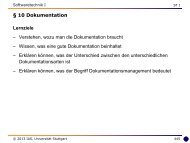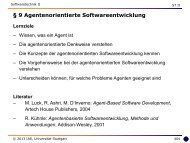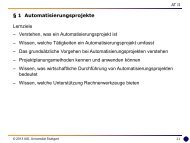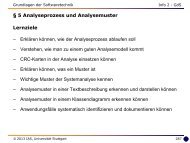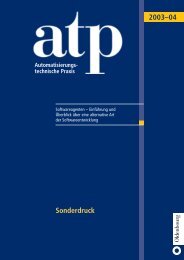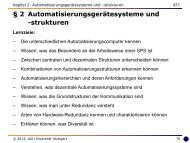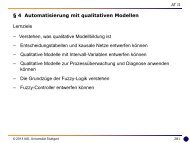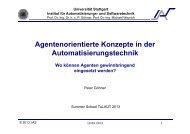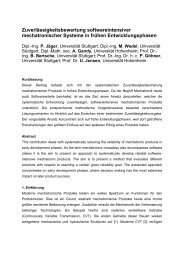Grundlagen FlexRay - Institut für Automatisierungs- und ...
Grundlagen FlexRay - Institut für Automatisierungs- und ...
Grundlagen FlexRay - Institut für Automatisierungs- und ...
Create successful ePaper yourself
Turn your PDF publications into a flip-book with our unique Google optimized e-Paper software.
<strong>Gr<strong>und</strong>lagen</strong> <strong>FlexRay</strong> BasicsV 1.1 11<br />
• Reliability of transmission – Transmission of information should be reliable and<br />
have deterministic timing, since the CSMA method used by the CAN bus can lead to<br />
massive fluctuations in timing.<br />
• Physical layer – the physical layer should be robust and simple.<br />
• Extendibility – The network should be easily extendable. Single ECUs should be able<br />
to be removed or added to the network..<br />
• Support for time- and event-based communication – since – depending on the<br />
application - both of these methods of communication may be suited better, both<br />
methods should be supported.<br />
CSMA:<br />
TDMA:<br />
Figure 1.1 Examples for time- (CSMA) and event-based (TDMA) communication<br />
[Göhn10]<br />
As a result of these requirements, the properties of the <strong>FlexRay</strong> system have been specified.<br />
The key parameter of any communication system is the data rate. In respect to current and<br />
future demand for bandwidth, a sufficiently high data rate of 10 Mbit/s per channel has been<br />
selected.<br />
A synchronous time base is provided, which ensures the deterministic character of the system.<br />
Because of that, the event-based communication process using priorities (CSMA/CA), as used<br />
in the CAN bus, had to be abandoned. Instead, a time-based method (TDMA) is used for data<br />
transmission, see Figure 1.1. By using scheduling, an accurate time plan is possible, while<br />
still allowing for a jitter of 0.5 to 10 µS (1 to 3µS typical)..<br />
Because the communication process is organized in cycles, providing each ECU with defined<br />
slots, a deterministic delay for messages can be guaranteed.<br />
The focus during the development was to make the system flexible and extendable. As a<br />
result, it is possible to choose which messages should be transmitted red<strong>und</strong>ant, and the<br />
system can be optimized for reliability or performance, using static or dynamic bandwidth<br />
allocation.<br />
As many as 60 parameters – e.g. message length or cycle length - in the network design allow<br />
an optimization of the network for the specific application or task.<br />
Bäurle 12.10.2012




